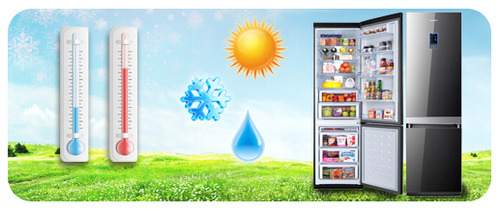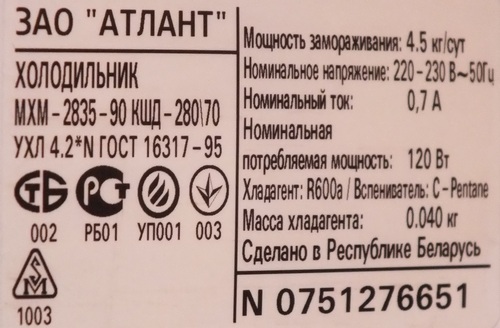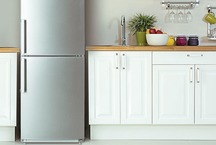
When choosing a refrigerator, people usually pay attention to the design, price, power consumption, number of compressors, volume and location of the freezer. But climate class the fridge stays somehow offscreen.
But for the correct operation of the equipment it is very important in what conditions, at what temperature of the room it will function. Otherwise, wait for trouble - sometimes very serious.

Photo: holodilniki.kz
What does the climate class of a refrigerator mean?
There are four climate classes of refrigerators, according to generally accepted standards. Foreign manufacturers designate them in Latin letters, they correspond to the climatic zones and temperature regimes possible in the premises (temperatures are, of course, plus):
- N - 16-32 degrees (normal);
- SN - 10-32 degrees (subnormal);
- ST - 18-38 degrees, conditions of high humidity (subtropical);
- T - 18-43 degrees, with a dry climate (tropical).
Refrigerators of climatic classes SN and N are usually offered for Russian buyers (UHL is a cold and moderately cold climate). The ST and T versions are designated in domestic models with the letter O (general climate).
As well as other characteristics, these data are indicated by manufacturers on the technical plate, which is pasted inside the refrigerator compartment.

Photo: www.xn --- 63-mdduaoecugb2g2e.xn - p1ai
Models of classes SN and N can ensure the stability of the temperature inside the chambers (freezing and refrigeration) in our climate.
If the product is chosen incorrectly, the refrigerator will not cope, for example, with a strong heat, will work inefficiently, at the limit of its capabilities, may quickly break.
Selecting equipment of the appropriate class is not only important for ensuring its operation in a normal environment. You need to protect yourself in case of an unexpected breakdown of the refrigerator during the warranty period. If the device is used in inadequate climatic conditions other than those specified in the instructions, the customer service may refuse to repair the warranty.
In connection with the increasing number of natural anomalies, when the summer temperature in our latitudes more often rises above 32 degrees, manufacturers have expanded the product line. Now you can buy models with double marking with a range of working ambient temperatures in degrees:
- SN-ST (16-38);
- SN-T (10-43).
Photo: www.xn --- 63-mdduaoecugb2g2e.xn - p1ai
What climate class refrigerator is better to choose?
Someone will think that it is better to buy a universal model, for example, SN-T. It will work equally stable in any conditions, both in heat and in cold. But you need to consider that such a product will cost much more expensive due to design features, due to the use of more resistant to changes in the environment and more expensive parts:
- compressor with increased cooling capacity;
- a condenser having an increased cooling surface;
- additional condenser cooling fan;
- increased insulation layer at the refrigerating chamber;
- materials with increased resistance to fungi and mold.
Designed to work in extreme conditions, devices may also have increased energy consumption.
Therefore, the domestic consumer should consider whether it is necessary to overpay for an option that will have an effect only a few times a year. It is more reasonable to choose a refrigerator of the climate class that best suits the conditions of the area in which the consumer lives. Such a choice will favorably affect the duration of the uninterrupted life of the device and the buyer's wallet.


